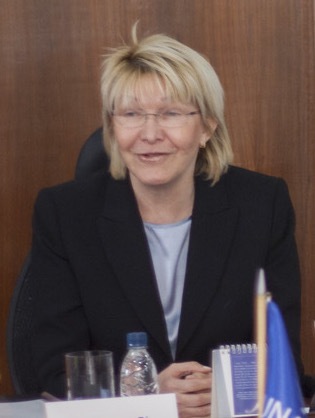Putin reminded Oliver Stone about the “Spanish dispatcher” in answering the question about the crash of MH17: for the full article, go here but you will need to translate.

Suspects in the downing of Malaysian airlines flight MH17 in eastern Ukraine in 2014, in which all 298 people aboard were killed, will be tried in a Dutch court and under Dutch law, the Netherlands’ foreign ministry.
Victims of the disaster, which occurred over territory held by pro-Russia separatists fighting Ukrainian government forces, came from 17 countries, and included 196 Dutch citizens.
The Dutch Safety Board, which investigated the cause of the crash, concluded in October 2015 that the plane was shot down by a Russian-made ground-to-air rocket.
Moscow, which denies any involvement in the fighting in eastern Ukraine, also denies one of its rockets could have been used against MH17. More here.
Memo on MH17 info exchange between Ukraine, Netherlands to help Kyiv sue Russia
Ukraine and the Netherlands will soon sign a memorandum on the exchange of information on the case of Boeing 777 flight MH17 shot down in 2014, which will help Kyiv in its lawsuit against Russia, Deputy Foreign Minister Olena Zerkal said.
“The Dutch do not want the work done to be questioned. We are now working on signing a memorandum on the exchange of information, since the downed Boeing is part of our lawsuit against Russia regarding the financing of terrorism, namely the supply of weapons which destroyed this aircraft,” Zerkal said on the air of Channel 5 on Wednesday.
At the same time, the Deputy Foreign Minister added: “We are already at the final stage of signing this memorandum.”
As reported, Ukrainian Justice Minister Pavlo Petrenko and Dutch Minister of Security and Justice Stef Blok signed a bilateral agreement on international legal cooperation on criminal matters relating to the 2014 crash of a Malaysia Airlines Boeing.
The Dutch government noted that a bilateral treaty with Ukraine allows for the prosecution of those responsible for the death of all 298 victims from 17 countries, not just Dutch citizens. “The agreement envisages that prosecution of suspects in the downed MH17 flight will be for all 298 people killed in the crash. This gives all relatives equal rights in the Dutch process,” the report said.
In addition, the agreement gives an opportunity to question Ukrainian suspects via a video linkup with the Netherlands. “The issue of the potential transfer of convicts has also been settled, which is important, because the Ukrainian Constitution does not allow extradition of its citizens,” the report says.
As reported, the Boeing 777 belonging to Malaysia Airlines flying from Amsterdam to Kuala Lumpur (Malaysia) was shot out of the sky killing all 298 passengers on board.
The international joint investigatory group (Joint Investigation Team, JIT), which is comprised of prosecutors and law-enforcement officials from Ukraine, the Netherlands, Belgium, Australia, and Malaysia, as well as EU legal officials, on September 28, 2016 presented its findings in the criminal investigation of the tragedy.
“The JIT concluded that MH17 was downed by a rocket, Series 9M38, launched from a self-propelled ground-to-missile launcher BUK-TELAR, in a farming area in the region of Pervomaiske village. The area is currently held by pro-Russian militant groups. Investigators said missile complex was delivered to Ukraine from the Russian Federation and returned there after the downing,” the findings said.
In early June 2017, the British investigative journalists group Bellingcat said it found a photo of the Buk 323 missile launcher of the Russian 53rd anti-aircraft missile brigade taken before the launcher was used to down the MH17 passenger flight in Donetsk region in 2014.
In mid-November 2016, Malaysian Transport Minister Liow Tiong Lai said that investigators had established the names of a hundred individuals suspected of involvement in the crime and that they will be named in 2017.
Representatives of the countries cooperating in the inquiry into this crash – the Netherlands, Australia, Malaysia, Ukraine and Belgium agreed that the cases against suspects in the case on the downing of the MH17 flight are planned to be considered in the Netherlands under the Dutch law.





 Luisa Ortega
Luisa Ortega 

